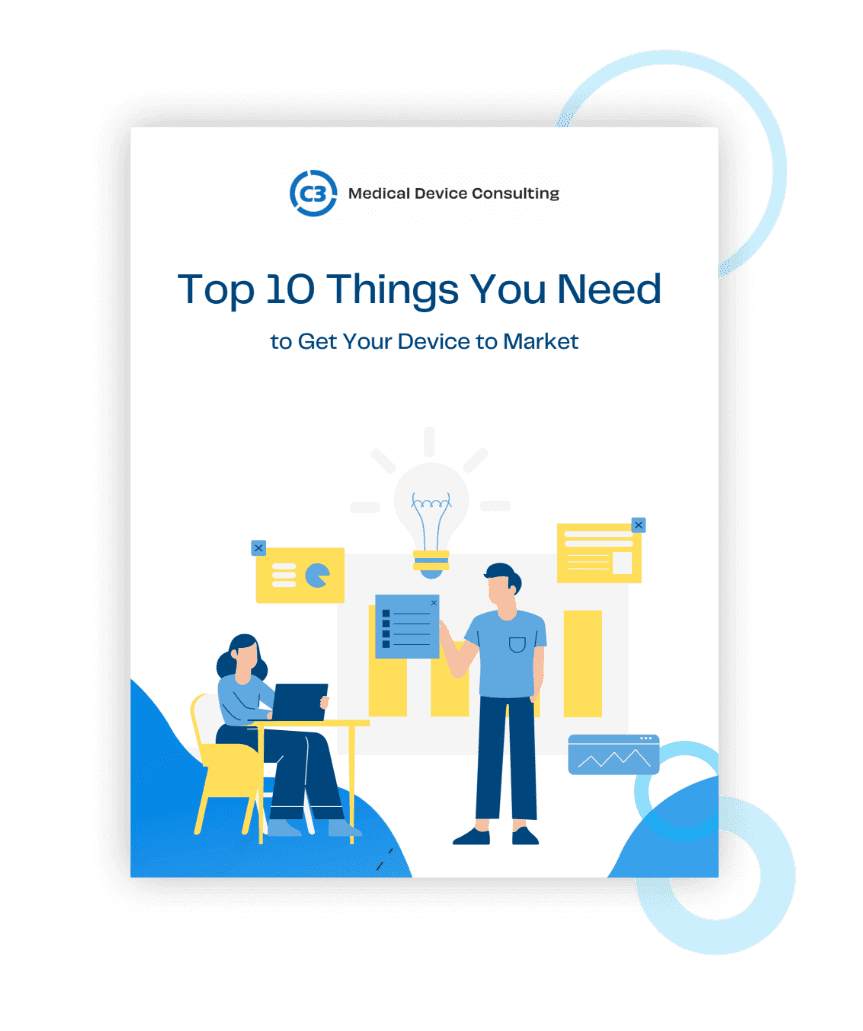You’d think that medical device development would be easy. After all, you just come up with an idea for a medical device, build it, get the green light of approval, and sell it on the market. Right?
Right. Sort of. While that’s the general ideal, there’s a whole lot more that goes into the medical device development process, and there are a few critical steps that can be the difference between failure and success for your product.
The Basics of Medical Device Design & Development
Before you get to the exciting part of marketing your product, getting people interested enough to buy it, and then making money off of it, you have to go through the whole process. We’ll be the first to admit that it can be a long one! (We’re talking years, not months.)
Product Ideation and Conceptualization
The first step in medical device design is to analyze and identify the market. This is the step where you find out whether there is an unmet need or a way to better address particular needs. For instance, you could be designing devices that improve health monitoring or anything that supports health and life. However, not all devices address particular concerns.
Some devices can also provide convenience in a routine lifestyle or situation. For example, you can design a health tracker that counts steps and monitors calories burned. In this instance, this device doesn’t particularly offer a health solution. All it does is give you information that you can then use to improve your health or lifestyle.
Addressing Regulations and Compliance Needed
Before your device goes to market, you will need to go through certain regulatory compliances. These regional and international standards are put in place to determine the requirements for design and performance parameters associated with biomedical materials, tools, and equipment. Once standards for a device are set, it can be easier for labs and medical officers to assess a medical device to ensure that it’s high quality and not harmful to people in any way.
Here are some of the regulatory bodies that may need to inspect your device:
● International Electrotechnical Commission
● International Organization for Standardization
● American National Standards Institute
● Association for the Advancement of Medical Instrumentation
● American Society for Quality
Design Control Regulations
Apart from regulation and compliance processes, you will also need to follow design control guidelines. This is put in place to ensure medical devices are safe for public use. Some of the regulations are put in place by bodies like the FDA and the European Commission. The FDA also regulates medical devices using Current Good Manufacturing Practices (CGMPs). These practices provide a framework for medical device manufacturers to follow.
Testing, Verification, and Validation
Your medical device must meet the functionality, usability, and reliability standards before it can go on the market. You will also need to have it assessed for effectiveness and safety. These parameters are measured against other devices that are already on the market. It is essential, especially for devices that address problems critical to life, to be thoroughly tested to confirm that they’re effective. Testing is also done to check that the medical device is properly aligned with the needs of the intended users. This is how people can be convinced that the device delivers the intended solution… and that’s what you really want!
Risk Management Procedures
This is the last step of medical device design. Once the device is tested, you should then consider focused risk management practices. This will help to ensure that the device is safe and usable and that it meets all regulations. During this process, medical device specialists will try to identify, control, and prevent failure that could cause a hazard to users. Once the device reaches an acceptable level of risk, you can then consider taking it to market.
Ready to Get Started on Your Medical Device Project?
We know that navigating the whole medical device development process can be tricky, but having a good medical device engineering and consulting partner can help lead you toward success. With 25 years of experience, our team at C3 Medical Device Consulting has assisted small startups and big corporations through the medical device design and development process, and we’ll be happy to do the same for you.
If you want to get started with your medical device project, schedule a free consultation with us today!










